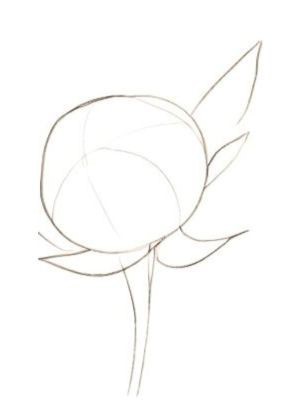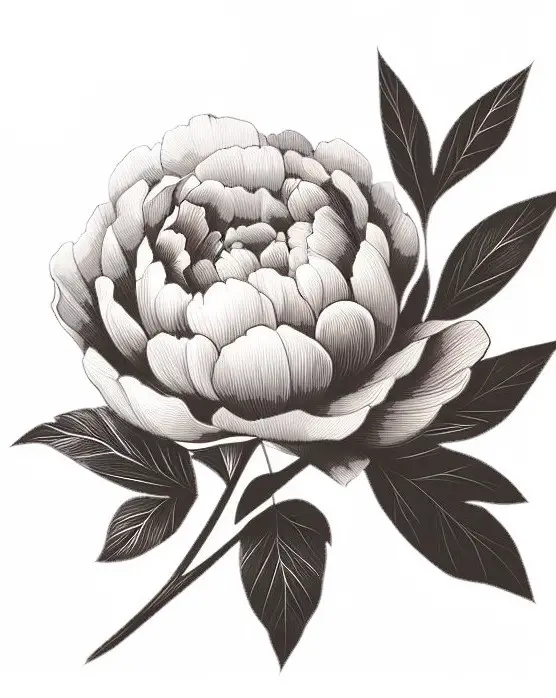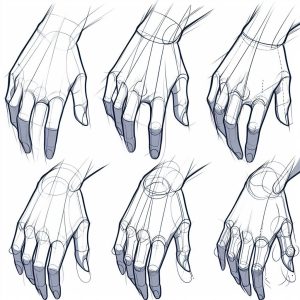Have you ever wondered how to draw peonies with grace and precision, only to be thwarted by the elusive intricacies?
This exploration lies a profound revelation: the art of peony drawing is not just about rendering petals—it’s about capturing the very essence of nature’s poetry.
In this captivating series, we traverse the terrain of techniques and unveil the secrets that transform a blank canvas into a vibrant tapestry of botanical beauty.
Brace yourself, for the world of peony artistry awaits, and your journey commences with this illuminating introduction.
Materials You’ll Need
To start your peonies drawing journey, gather the following materials:
How to Draw Peonies: A Step-by-Step Guide
Variations in different peony shapes can be obtained from Peone drawing references. Here is the step-by-step guide of drawing peonies, capturing their timeless beauty on paper-
Step 1: Sketching Basic Outlines and Proportions
Begin your peony drawing by laying the foundation with basic outlines. Use light, circular guidelines to establish the shape and proportions of the blooms.

Pay attention to the overall composition, ensuring a balanced arrangement that sets the stage for your intricate peony masterpiece.
Step 2: Setting the Flowing Lines for Stems & Leaf Structures
Bring life to your peonies by adding flowing lines for stems and detailing leaf structures. These lines establish the graceful posture of the blooms, giving them a realistic and organic presence on your canvas.

The stems provide a natural flow, connecting the peonies to the artistic environment you’re creating.
Step 3: Adding Detail and Definition (Layer, Texture, Shading)
Now, bring your peonies to life by adding layers, texture, and shading to capture their true essence. Focus on the intricate details of each petal, incorporating layers to bring depth and realism.

Introduce texture to showcase the uniqueness of every petal, and master shading techniques to create a three-dimensional effect. This step is where your peony drawing truly comes to life, with each stroke enhancing the beauty and complexity of the blossoms.
Troubleshooting Common Issues
Proportional issues can occasionally throw a curveball into your artistic endeavors, disrupting the harmonious balance of your peony drawing. Understanding and effectively dealing with these common challenges is pivotal to ensuring that your botanical masterpiece remains true to life-
- Correcting Size Discrepancies: Start by keenly observing your drawing, and identifying areas where proportions seem off. Utilize erasers to gently adjust the size of elements, ensuring that each component aligns with the overall scale of your peony.
Precision is key here, as subtle corrections can make a significant difference.
- Adjusting Perspective Mistakes: Analyze the angles and lines within your drawing. Identify areas where perspective may be misconstrued, and employ corrective measures.
This could involve altering the size and positioning of certain elements to align with a consistent perspective throughout the composition. Attention to detail is paramount to maintaining the visual coherence of your artwork.
- Smoothing Out Shading Blunders: To address shading blunders, adopt a meticulous approach. Identify the areas where shading seems overworked or uneven.
Employ blending techniques to smooth out transitions, restoring a seamless flow between light and shadow. Patience is key in this process, as gradual adjustments yield the most polished results.
- Blending Techniques for Seamless Transitions: Experiment with blending tools such as blending stumps or brushes, gently working over shaded areas to create a smooth, unified surface. This technique not only rectifies shading blunders but also contributes to a professional and refined appearance in your peony drawing.
Final Words
In the colorful tapestry of artistic exploration, our journey on how to draw peonies finds its final strokes. As we conclude this creative odyssey, the once-intimidating petals have become a canvas for our imagination.
Navigating the intricacies of peony anatomy, shading, and composition, we’ve cultivated a skill set that transcends mere drawing. The allure of peonies, captured in strokes and hues, now adorns our canvases with a timeless elegance.
This conclusion isn’t just an endpoint; it’s a celebration of newfound abilities and the beauty discovered in every stroke.
As you step back and admire your peony masterpiece, remember that the journey of artistic expression is as perennial as the bloom itself.



